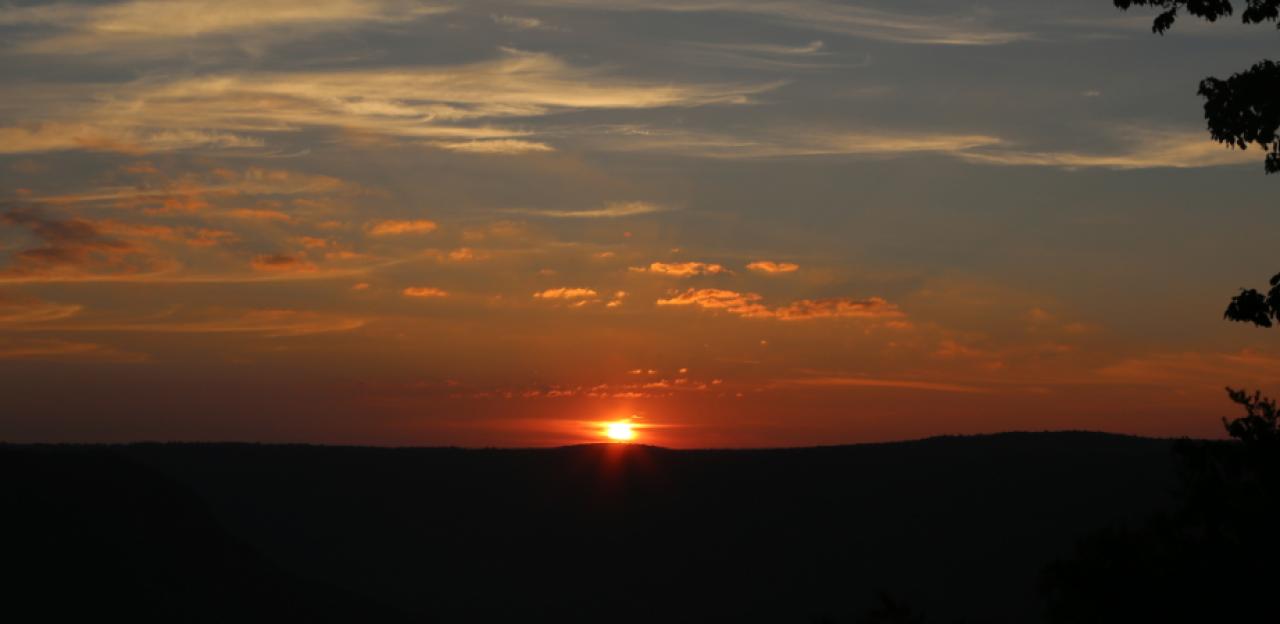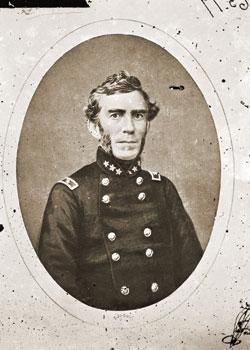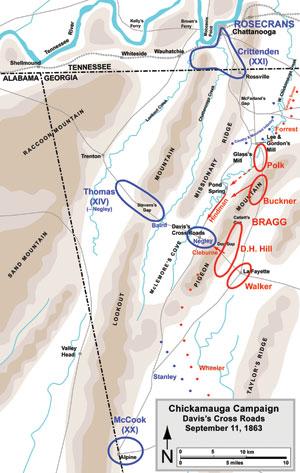Maneuvers at McLemore's Cove

Hallowed Ground Magazine, Fall 2010

Following the Confederate evacuation of Chattanooga on September 7, Union Maj. Gen. William Rosecrans ordered his troops to march immediately after the retreating Confederate army. Reports from prisoners and local civilians indicated that the Confederates were in disarray, having fled Chattanooga in a panic. Despite the advice of some of his commanders to consolidate around the city, Rosecrans believed a rapid pursuit might pin down and destroy the Army of the Tennessee.
Unfortunately for Rosecrans, the Confederate withdrawal had in fact been relatively orderly, leaving Lt. Gen. Braxton Bragg with an intact, capable fighting force. Surprised by Rosecrans’s Maneuvers southwest of Chattanooga, Bragg now used the mountains to screen his own surprise for the pursuing Federal forces.
Bragg learned that the largest Union detachment, Maj. Gen. George H. Thomas’ XIV Corps, was marching toward LaFayette through McLemore’s Cove, a steep valley at the southern end of the Chickamauga Valley. Bragg hoped to use the valley to trap Thomas’s lead division, under Maj. Gen. James Negley, which was a 12-hour march ahead of the nearest Union reinforcements.

On September 9, Bragg ordered one of Polk’s divisions under Maj. Gen. Thomas C. Hindman to move south into McLemore’s Cove and attack Negley from the north, while a second division from Maj. Gen. D.H. Hill’s corps would attack through Dug Gap in the mountains to the east. On the morning of September 10, Negley’s 4,600 men proceeded with their plan to cross McLemore’s Cove and attempt to penetrate Dug Gap.
At this point, however, Bragg’s trap did not spring. Hill failed to move his division into the valley, while making a number of excuses for the lack of movement. Hindman choose not to attack without support from Hill’s division and remained in position north of Negley. Bragg, fearing the opportunity would be lost, reinforced Hindman with two divisions of Buckner’s Corps. Despite now significantly outnumbering the Union forces, Hindman and Buckner still failed to pursue the attack. Learning of the Confederate force to his left, Negley withdrew that evening to defensive positions at Stephens Gap along the western edge of the valley. Bragg ordered Hindman to attack the morning of September 11, but by then a second Union division under Brig. Gen. Absalom Baird arrived in the valley to cover Negley’s retreat. Bragg’s opportunity to cripple a critical portion of Rosecrans’s army had been lost.


